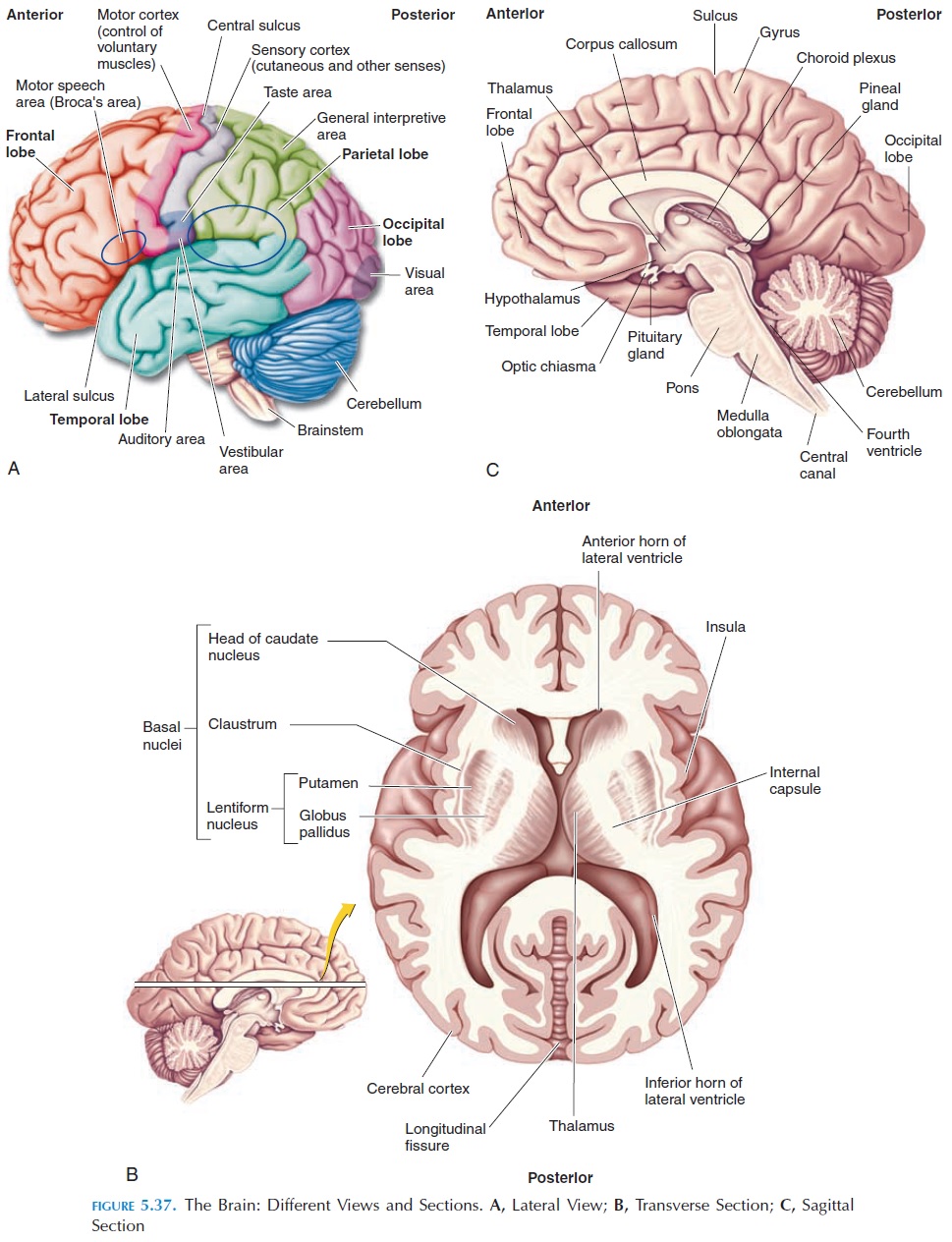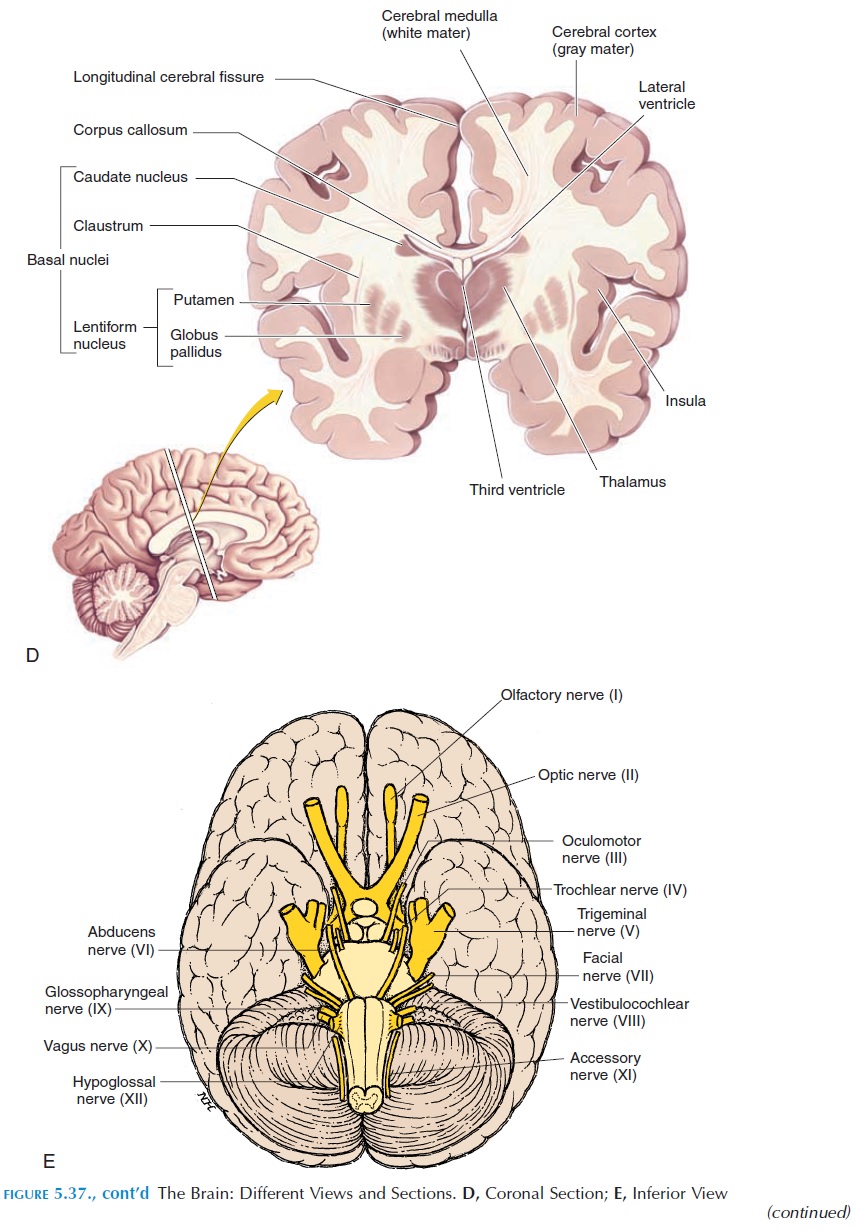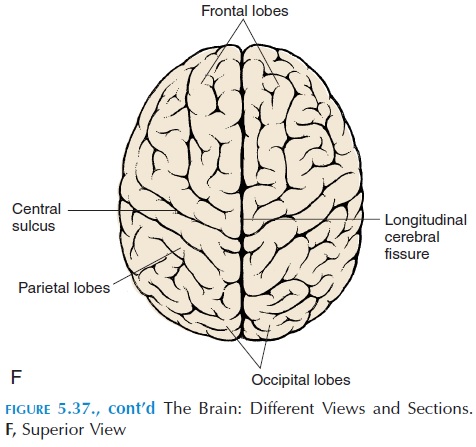Chapter: The Massage Connection ANATOMY AND PHYSIOLOGY : Nervous System
The Hypothalamus - Brain and Brain Divisions
THE HYPOTHALAMUS
The hypothalamus (Figures 5.36 and 5.37C, D) is lo-cated close to the thalamus and lies just above the pi-tuitary gland. It also has many collections of neu-rons—nuclei. It is closely associated with the limbic system. In addition, the hypothalamus has important regulatory functions:
· It controls skeletal muscle contractions that ac-company various emotions, such as changes in facial expression and muscle tone.
· It coordinates the activities of the centers that control respiration, heart rate, blood pressure, and digestion that are located in the pons and medulla.
· It secretes various stimulatory and inhibitory hormones into the blood, which are trans-ported to the pituitary gland located close to the hypothalamus, where they regulate pitu-itary hormone secretion (Figure 6.4). Certain neurons located in the hypothalamus manufacture antidiuretic hormone and oxy-tocin in their cell bodies. Axons from these cell bodies project into the posterior pituitary and secrete the hormones into the blood in vessels perfusing this region.
· It has centers, such as feeding centers and thirst centers, that modify emotions and behavior to fulfill such basic needs. Neurons located in the hypothalamus monitor blood glucose levels and blood volume and alter behavior accordingly.
· It has numerous connections with the rest of the brain and is a link between voluntary, endocrine, and autonomic functions. It controls and inte-grates the activities of the autonomic nervous system. For example, even the thought of stress-ful situations increases heart rate and blood pressure and produces many other physiologic changes similar to the fight-or-flight reaction.
· It has certain nuclei responsible for maintain-ing body temperature. Neurons located here monitor the core body temperature and pro-duce such changes as sweating, shivering, and vasodilation or constriction in cutaneous blood vessels by regulating the vasomotor centers and other centers located in the medulla and pons.
· It plays a major role in the establishment of sleep patterns.




Related Topics